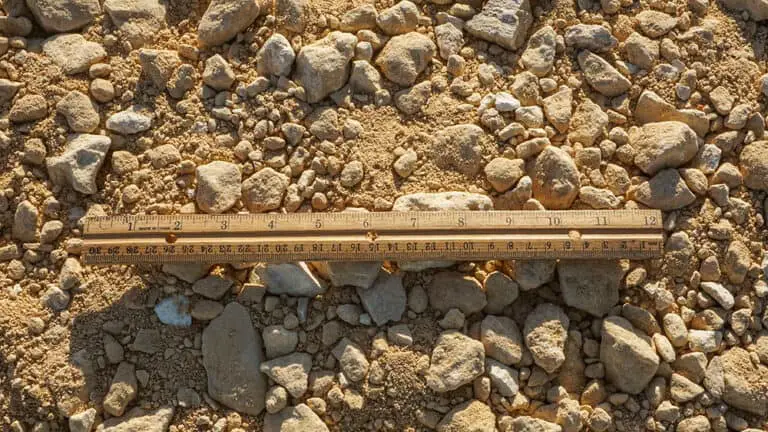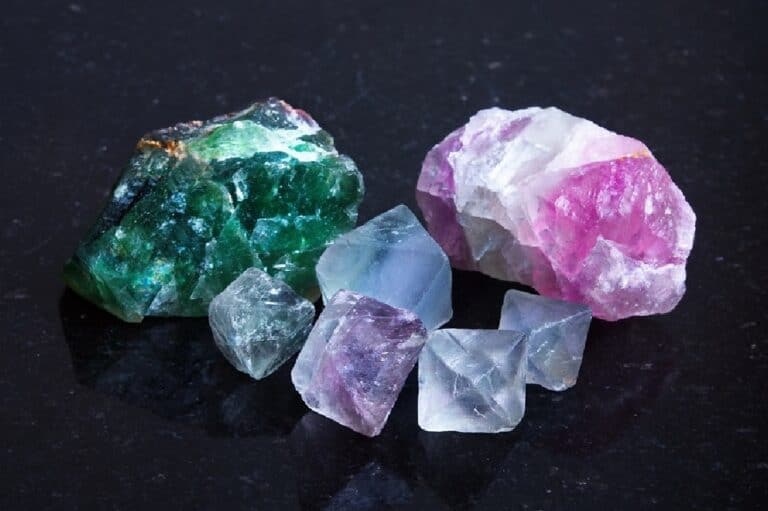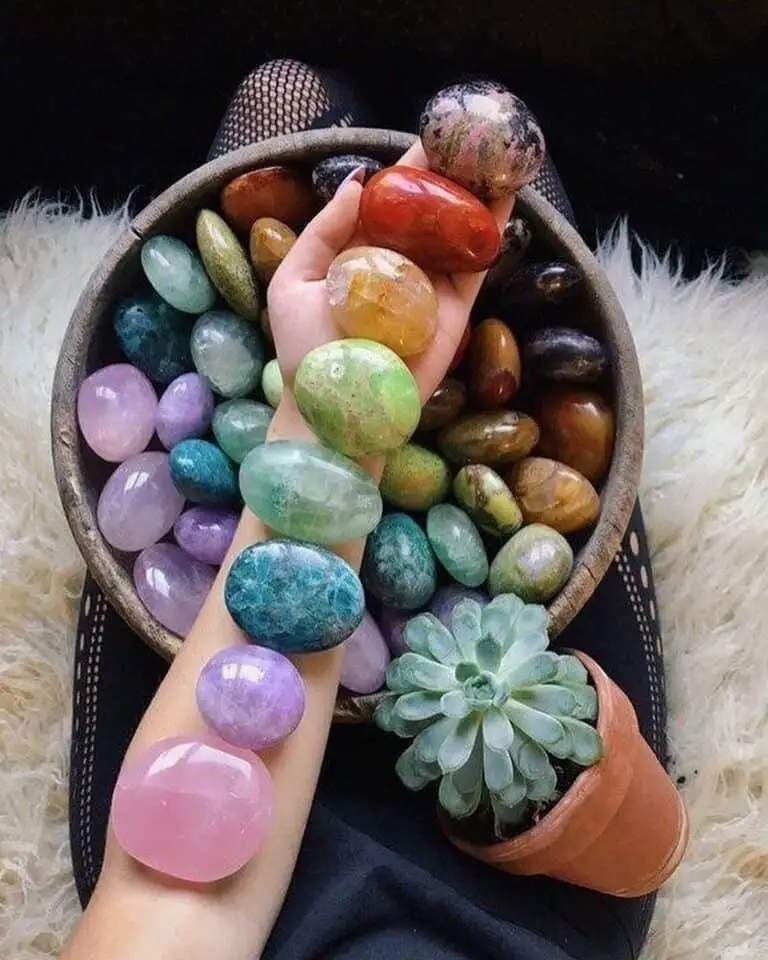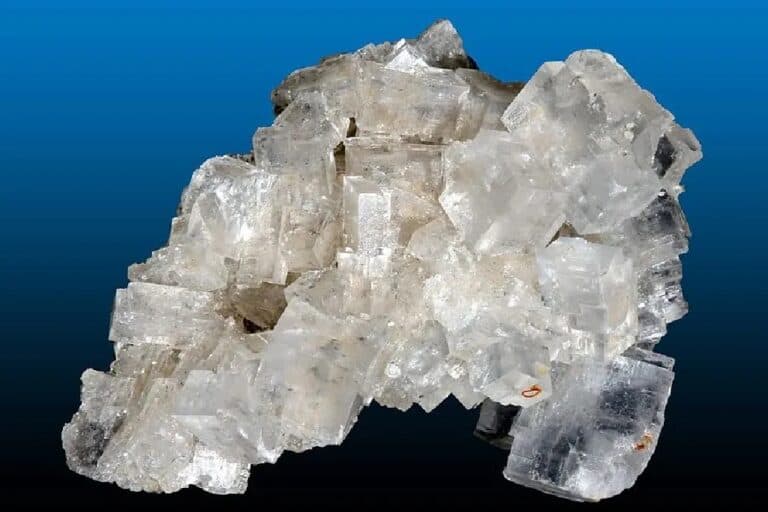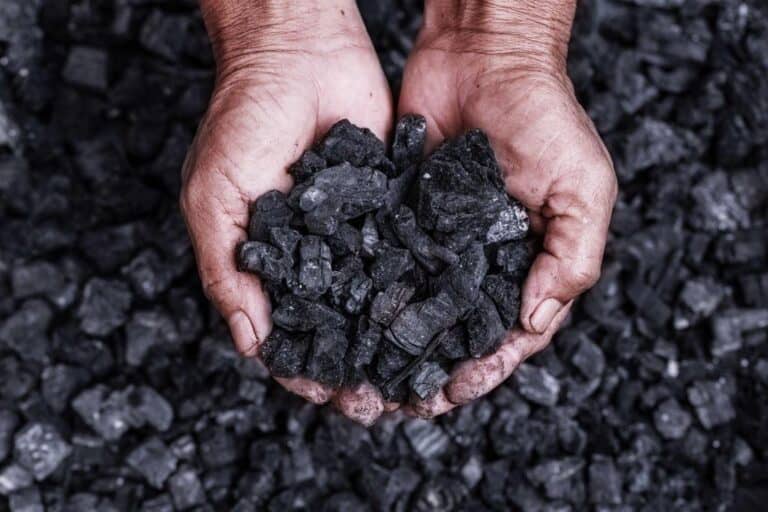How Does Hydrothermal Mineral Deposit Formation Process Happen?
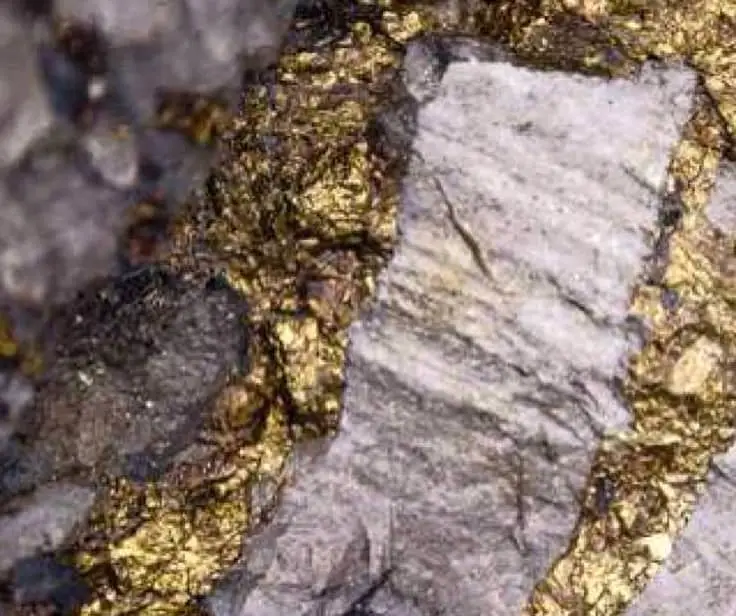
Are you curious about how minerals like gold, copper, and lead are formed deep within the Earth’s crust? The process is known as hydrothermal mineral deposit formation, and it’s a fascinating journey from hot water or fluid in the Earth’s interior to valuable mineral deposits on the surface.
In this blog post, we’ll go into more detail about the hydrothermal process and look at the different kinds of hydrothermal mineral deposits and how they are formed.
So, if you want to learn more about how these deposits are formed and what they contain, read on!
The Hydrothermal Process
The hydrothermal process of mineral deposit formation begins with the formation of hot water or fluid in the Earth’s crust. Volcanoes, radioactive materials, and magma cooling and hardening can produce this hot water or fluid.
Once the hot water or fluid has been formed, it begins to move through fractures and pores in the rock. As it moves, it dissolves minerals from the rock and transports them in solution. The minerals that are dissolved depend on the composition of the rock and the hot water or fluid.
As the hot water or fluid travels through the rock, it may mix with colder water and begin to cool. As it cools, the minerals in solution will begin to precipitate, or solidify, out of the water and onto the walls of fractures and pores. This process of precipitation forms the hydrothermal mineral deposits.
Hot water or fluid temperature and composition determine what minerals are left behind. Different temperatures and compositions will favor the precipitation of different minerals. Hot, acidic fluids dissolve and move metals like copper and gold, while cooler, less acidic fluids help minerals like quartz and calcite stick together.
How Do Minerals Form From Hydrothermal Solutions?
When water seeps down through the Earth’s surface, it can heat up as it comes into contact with hot rocks. The water can then start dissolving rocks to emit minerals. This heated and mineral-rich water is called a hydrothermal solution. Hydrothermal solutions can rise back to the surface, where they create deposits of minerals.
Some common examples of minerals that form from hydrothermal solutions are quartz, calcite, and halite. These minerals form when the hydrothermal solutions cool and crystallize. The conditions in which these crystals form can vary, depending on the temperature and composition of the solution.
Quartz is a common mineral that often forms near hydrothermal vents. It crystallizes in a variety of ways depending on the temperature and composition of the surrounding solution. For example, at low temperatures, quartz crystals form in a hexagonal pattern. In contrast, at high temperatures, the crystals form in a more distorted hexagonal shape.
In order to create minerals, the hydrothermal solution’s composition is crucial. For example, solutions with a high concentration of dissolved silica often precipitate silicate minerals. These include micas and feldspars.
What Minerals Are Found in Hydrothermal Veins?
Hydrothermal veins are most commonly filled with quartz, a mineral that is found in many types of rocks. Other minerals that can be found in hydrothermal veins include calcite, fluorite, and galena. These veins form when hot water and minerals escape from the earth’s surface and mix with cooler groundwater or surface water.
The minerals that are found in hydrothermal veins typically depend on the location where the vein formed. For example, veins in Nevada are often filled with gold and silver, while those in Italy are often filled with copper and zinc.
Hydrothermal veins are also found in the ocean, where they can be filled with gold or diamonds.
Many of the other minerals found in hydrothermal veins are formed by volcanic activity. Most hydrothermal veins are formed in the Earth’s crust. However, some of the world’s most famous hydrothermal veins, such as those found at Mammoth Mountain in California and at Serra do Ouro in Brazil, are formed in volcanic lava tubes.
Hydrothermal veins are typically narrow, generally less than a meter in width. The width of the vein is dependent on the mineral that fills it.
Hydrothermal veins are often filled with crystals. The crystals form in the molten material below the surface of the Earth. This molten material is called magma and is thought to be part of what makes up the mantle.
The crystals in veins are regularly very small, but they can be large. Some of the largest crystals found in hydrothermal veins are hundreds of meters in length. These crystals can weigh up to several tons and may have a diameter of over one meter. The veins are often located in areas close to hydrothermal vents.
Where Does the Water for Hydrothermal Alteration Come From?
Hydrothermal water can come from numerous sources. It can come out of molten rock (magma) as it cools and forms rocks that change from one type of rock to another as a result of pressure, temperature, or chemical changes.
Hydrothermal alteration takes place when water comes into contact with hot rocks and the water is heated to a high temperature. The water can come from various sources, including groundwater, rainwater, or surface water.
The water can be heated by the earth’s heat or by magma that is close to the surface. The heated water can then travel through the rocks, where it can dissolve minerals and metals.
The dissolved minerals and metals can then be carried away by the heated water, and they can form new rocks called hydrothermal deposits. Hydrothermal alteration can also occur when hot springs come into contact with cold rocks (i.e., rocks that are cooler than the water).
Magma that is near the surface can also heat the rocks, and magma was involved in the creation of many hydrothermal deposits.
The word “hydrothermal” comes from two Greek words: “hydro,” meaning water, and “thermal,” meaning hot. Sedimentary rocks can form in any type of environment. Sedimentary rocks can be formed by the accumulation of sand, clay, and other materials.
What Is the Difference Between Magmatic and Hydrothermal Deposit?
Ore deposits are concentrations of minerals that have been found to be economically valuable. There are two main types of ore deposits: magmatic and hydrothermal.
Magmatic ore deposits are made when molten rock, called magma, cools and solidifies inside the Earth’s crust.
Hydrothermal ore deposits form from hot water that circulates through the earth’s crust.
Minerals from the rocks around it are taken away by the water and left in cracks and crevices. The two types of ore deposits have different characteristics, which affect how they are mined and processed.
Magmatic ore deposits can make it possible to get a lot of metal at once. The metal can be separated from the ore by melting it and pouring it into a mold for casting. This process is called smelting.
Hydrothermal ore deposits may be mined by drilling or blasting. These deposits are usually mined by flotation, a process that involves pumping water through the deposit and separating the metal from the ore.
To make metal, the metal is put in vats and then reduced by adding chemicals. Gold and silver ores do not have a high melting point and are therefore separated from the rock by heating it. The metals are recovered by pouring them into molds. By heating the mixture and putting the gold and silver in separate pans, gold can be separated from silver.
Conditions for Formation
Four parameters must be satisfied for hydrothermal deposits to form: the existence of salty, hot water with a high mineral concentration, the presence of apertures in rock that enable solutions to migrate, the availability of a deposit site, and the occurrence of a chemical reaction.
The most common source of heat is magma, but heat can also come from metamorphism, meteorites, or conditions in the ocean.
Hydrothermal deposits can happen in any kind of rock, and how they form depends on the geology of the area. The final makeup of the deposits depends on how the salty solutions react with the rocks they come into contact with.
Brine is Essential
Pure water is never used in hydrothermal formation; instead, brine is required. These brines, on the other hand, vary from saltwater in that they can dissolve and carry metals like gold and silver.
Brines, especially those made of salt and calcium, are efficient sulfide and oxide mineral solvents. Magnesium and potassium salts, as well as trace amounts of many other elements, are commonly found in them.
Concentrations range from a few percent to as much as 50% of dissolved solids by weight.
Mesothermal Deposits
There are replaceable textures and open-space textures. Open-space textures are usually found at lower levels. It’s also common to have more direct contact with natural rocks, which can be igneous, sedimentary, or metamorphic.
Chalcopyrite, bornite, enargite, tetrahedrite, sphalerite, and galena are the most common minerals. Lead, zinc, and copper are the most common base metals.
Epithermal Deposits
This form of hydrothermal deposit, also known as shallow heat deposits, is most usually linked with hot springs and geysers, making it the most well-known.
The most common type of formation is open space-filling, which looks like crusting, combing, and bands that are all the same size and shape. There are many different kinds of ores in these deposits. Gold and sulfide ores like copper, zinc, lead, molybdenum, bismuth, nickel, cobalt, antimony, and mercury are the most common. Quartz, calcite, fluorite, barite, chalcedony, rhodochrosite, and dolomite are among the minerals found in these veins.
Types of Hydrothermal Mineral Deposits
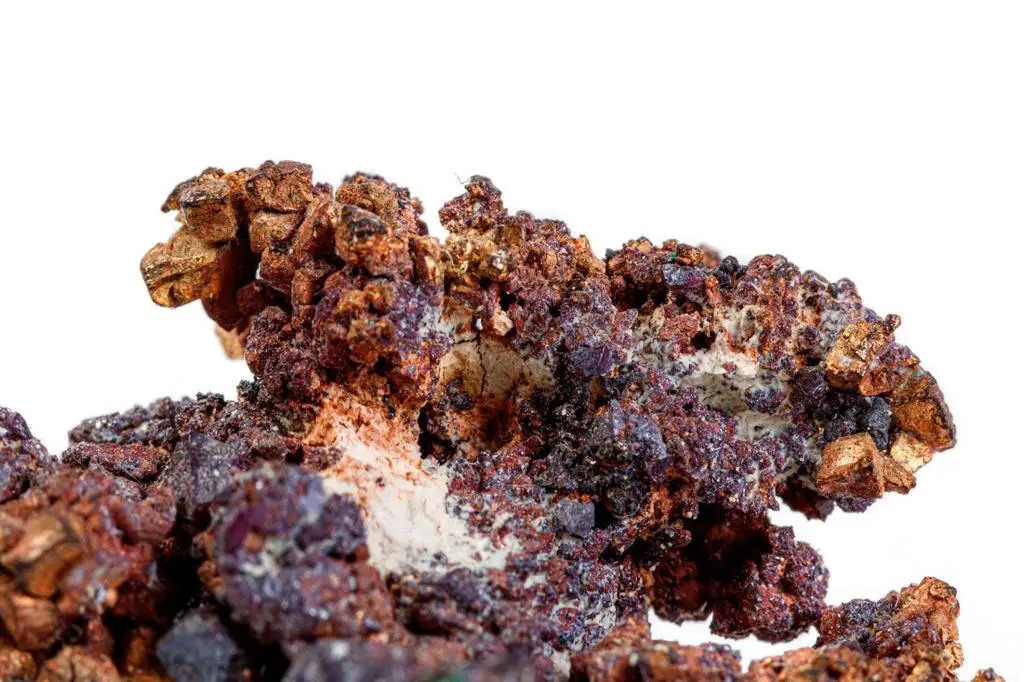
There are different kinds of hydrothermal mineral deposits based on the temperature and make-up of the hot water or fluid that makes them.
The temperature of the hot water or fluid is one way to group hydrothermal mineral deposits. High-temperature deposits form when the hot water or fluid is above 150 °C (300 °F), while low-temperature deposits form when the hot water or fluid is below 150 °C.
High-temperature deposits are often found near volcanoes and form close to the surface of the Earth. They may contain minerals such as gold, silver, and copper. On the other hand, low-temperature deposits form deeper in the Earth’s crust and may include minerals like lead, zinc, and mercury.
One more way to group hydrothermal mineral deposits is by what the hot water or fluid is made of. Acidic fluids, which have a low pH, are more likely to dissolve and transport metals such as copper and gold. Minerals like quartz and calcite are more likely to form in fluids with a high pH, which means that they are more basic.
Some examples of hydrothermal mineral deposits include:
- Gold deposits. These deposits form when hot, acidic fluids dissolve and transport gold from the surrounding rock. Gold deposits are often found in association with other minerals such as quartz and sulfides.
- Copper deposits. Like gold deposits, copper deposits form when hot, acidic fluids dissolve and transport copper from the surrounding rock. Copper deposits may also contain other minerals such as iron, zinc, and lead.
- Lead and zinc deposits. These deposits form when hot, basic fluids dissolve and transport lead and zinc from the surrounding rock. Lead and zinc deposits may also contain other minerals such as silver and copper.
- Other examples. Hydrothermal mineral deposits may also contain minerals such as silver, mercury, and molybdenum. These minerals are typically found in association with other hydrothermal minerals and are often mined as byproducts of other mineral deposits.
Final Thought
Hot water and rocks come together to cause the formation of hydrothermal mineral deposits. This process can create deposits of many minerals, including gold, silver, and copper. The formation of these deposits can take many years, and the process is still not fully understood. However, scientists are learning more about this process every day, and more deposits are being discovered.
In conclusion, scientists still don’t fully understand how hydrothermal mineral deposits form, but they are getting a better idea of how these deposits form. The next step is to keep studying these deposits to find out how much money they could make.

